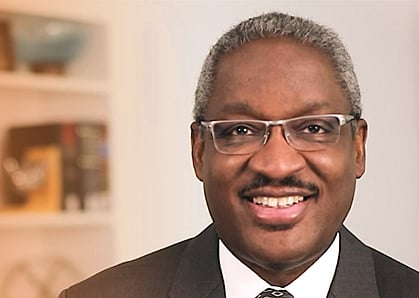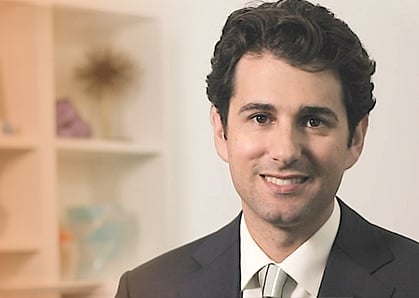Miami-Dade Rail Link Could Be Model for Future Projects
The use of public-private partnerships (P3s), especially in the transportation sector, is gaining steam in South Florida. Proposed projects have included Miami-Dade College Medical Campus expansion, red-light cameras, passenger rail, UniversityCity at Florida International University and other similar projects.
Given that transportation improvements often require extremely costly new infrastructure, it is not surprising that P3s, which can reduce the cost to the public of constructing public infrastructure, would be the favored approach by counties, including Miami-Dade County, to meet future transportation needs.
Public transportation systems have, in recent years, been funded primarily by the Federal Transit Administration. However, because federal funds are more constrained than ever, P3s will likely be needed to fill the funding gaps. Indeed, the federal government has recently emphasized the importance of P3s so that its limited funding dollars can go further than under traditional financing approaches.
When cash-strapped, debt-laden governments are unable to finance or fund major infrastructure projects themselves, P3s can provide the right influx of private cash and expertise and a shifting of risk from the public to the private sector that would allow the governments to move forward with crucial projects in a well-planned, cost-effective and accelerated manner.
Consistent with these trends, Miami-Dade County elected officials are now looking toward a combination of FTA funding and a P3 model, similar to the partnership used to build the almost completed PortMiami tunnel and the planned new light-rail public transportation system connecting the city of Miami and the city of Miami Beach.
Recently, Miami Beach officials signed a letter of intent to purchase prime property that could eventually be used as a transit hub for the future light-rail system. The property is adjacent to city-owned parking lots and could allow for the possibility of incorporating retail and commercial space into the transit station.
A P3 for the proposed rail link could take the form of the private company receiving an availability payment from the government as revenue, in return for making the rail link service available for use by riders. Another option is for the government to provide a bigger portion of the financing for the building and design of the system and retain a greater portion of initial revenues. That would be in exchange for the private company to accept more risk and establish a formula for distribution of revenues based on projected future ridership after the initial stages of the project.
In addition, joint public-private real estate developments at the rail stations can be used to help finance the new system. We have worked on several similar deals in the past, including for the county's existing Metrorail system, and joint station development is now a time-tested approach. Ultimately, because P3s are inherently flexible in nature and frequently involve a combination of different financing approaches, the options for structuring the deal are endless.
Since the momentum shift for the Miami Beach light-rail system, discussions about expanded public transit options on mainland Miami have also been sparked. Miami-Dade County Mayor Carlos Gimenez is considering a rail line that would provide transport into the western region of the county, to create much-needed east-west transit access. In fact, an east-west route was planned as part of the initial Metrorail system in the 1980s, but unfortunately has yet to come to fruition. Now that the population in the west Miami-Dade County has exploded, the need for this route is greater than ever before.
The benefits of a P3 in the context of major transit and infrastructure projects are not only reduced costs to the government, but just as importantly, a shortened design and construction period. As Gimenez stated, the rail system is a "very near-future need." A P3 model will help ensure that the rail system in this critical transportation corridor opens for operation in less time and for less public money.
The P3 model can be used not just in the building of the transportation systems, but also in their operation and innovation. Miami-Dade County has embarked upon an initiative to use compressed natural gas (CNG) to modernize and increase the efficiency and reduce the costs of the county's transit bus fleet. Several companies are lining up to vie for a chance to partner with the county in a P3 to design, maintain and operate the proposed CNG program for Miami-Dade Transit.
As is typical of the P3 model, a P3 for CNG would allow the county to receive world-class, innovative services from companies that are experts in the use and development of CNG-operated transit systems, while also saving money through the efficiency and reliability that those experienced companies can offer.
Such new and expanded P3 efforts follow on the heels of transit system improvements, such as the contract award to AnsaldoBreda for the design and build of new high-tech Metrorail cars, as well as the new contract awarded to Beauchamp Construction Co. for the automated people mover system at Miami International Airport, in which private entities were tasked with sharing in the projects' risks while bringing new breakthrough technologies to the county's transit operations. We worked on both of these transit procurements, and the ingenuity offered by the winning proposers, as compared to traditional construction contracts, was notable.
Although the details of the specific model have yet to be ironed out, a combination of any number of proven structures can be utilized to share risks and rewards between the local governments and the private partner, from joint real estate developments at the stations to availability payments to traditional fares. This project has the potential to become the signature P3 in the Miami area and a model for future public transportation systems.
As Miami grows into a major gateway city to various parts of the world, increasing transportation options for its hundreds of thousands of daily commuters, residents and yearly tourists will allow the growth and expansion of the economy and support the transformation that is placing Miami in the global spotlight.
With expanded and easier access to various parts of the county, attractions — such as the planned vertical entertainment center SkyRise Miami — and new and future businesses can have the possibility to experience a level of success that is not as possible when mobility and economic cross-pollination is restricted through lack of sufficient transit options.
It has been shown that public transportation can lead to more people moving to city centers, which results in job accumulation in those centers and increased wages and economic productivity over time. Thus, improving and expanding public transportation service adds economic value in the range of $1.5 million to $1.8 billion a year.
Efforts that Miami can make to expand transportation will in turn reduce the growth-hindering and innovation-hindering effects of traffic jams and congestion on its roadways and allow Miami to step into its second century of development full speed ahead.
This article is reprinted with permission from Law360.

